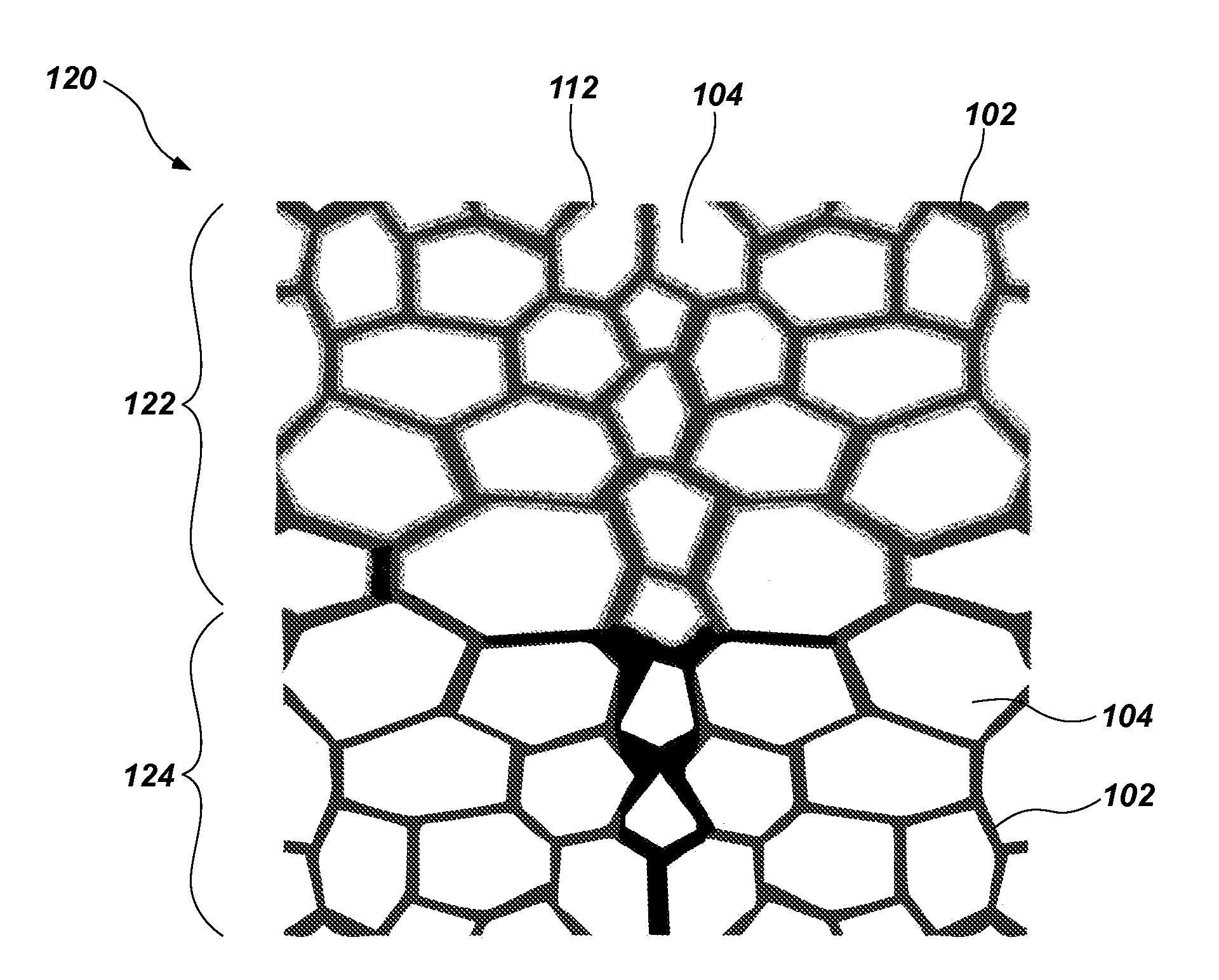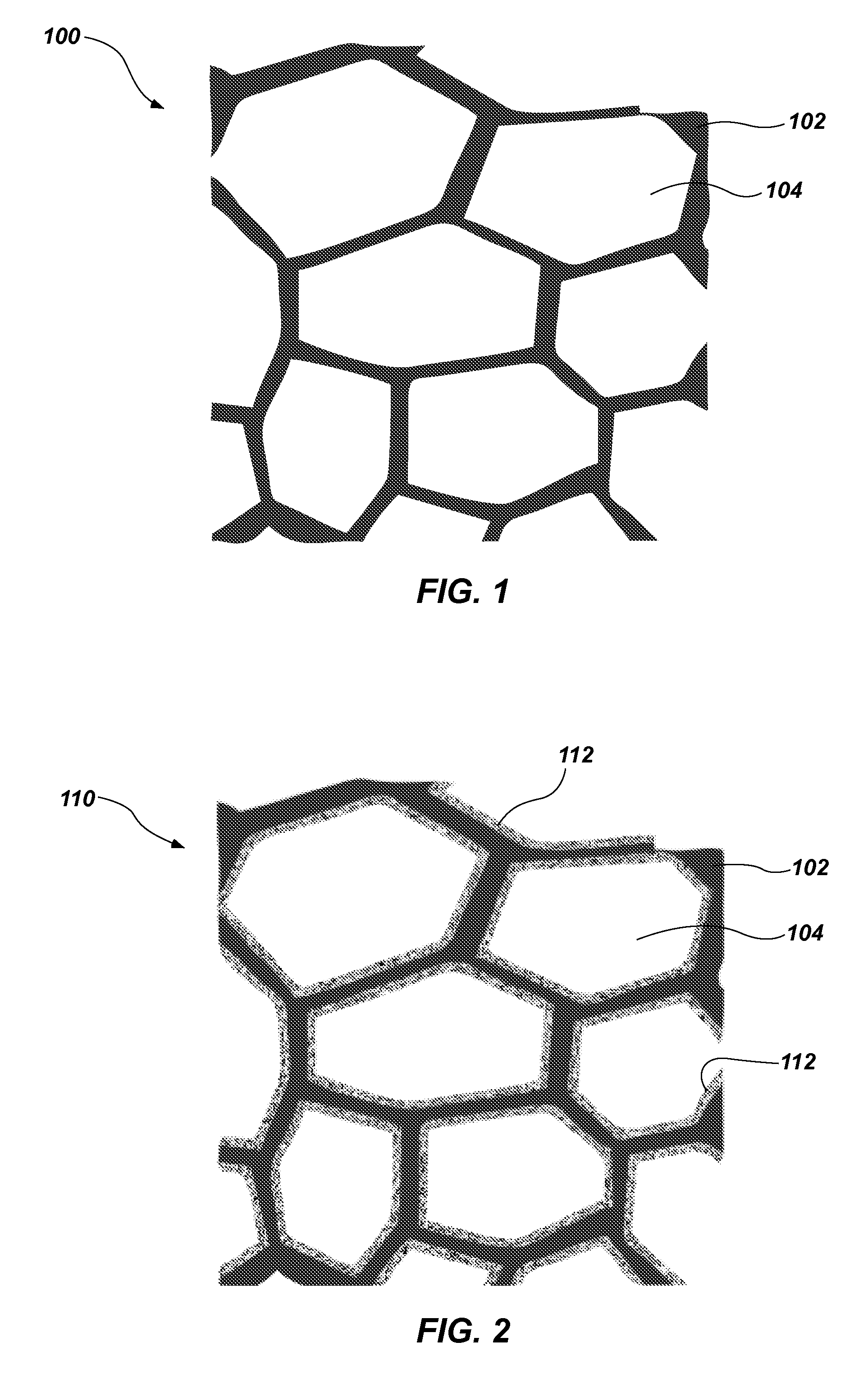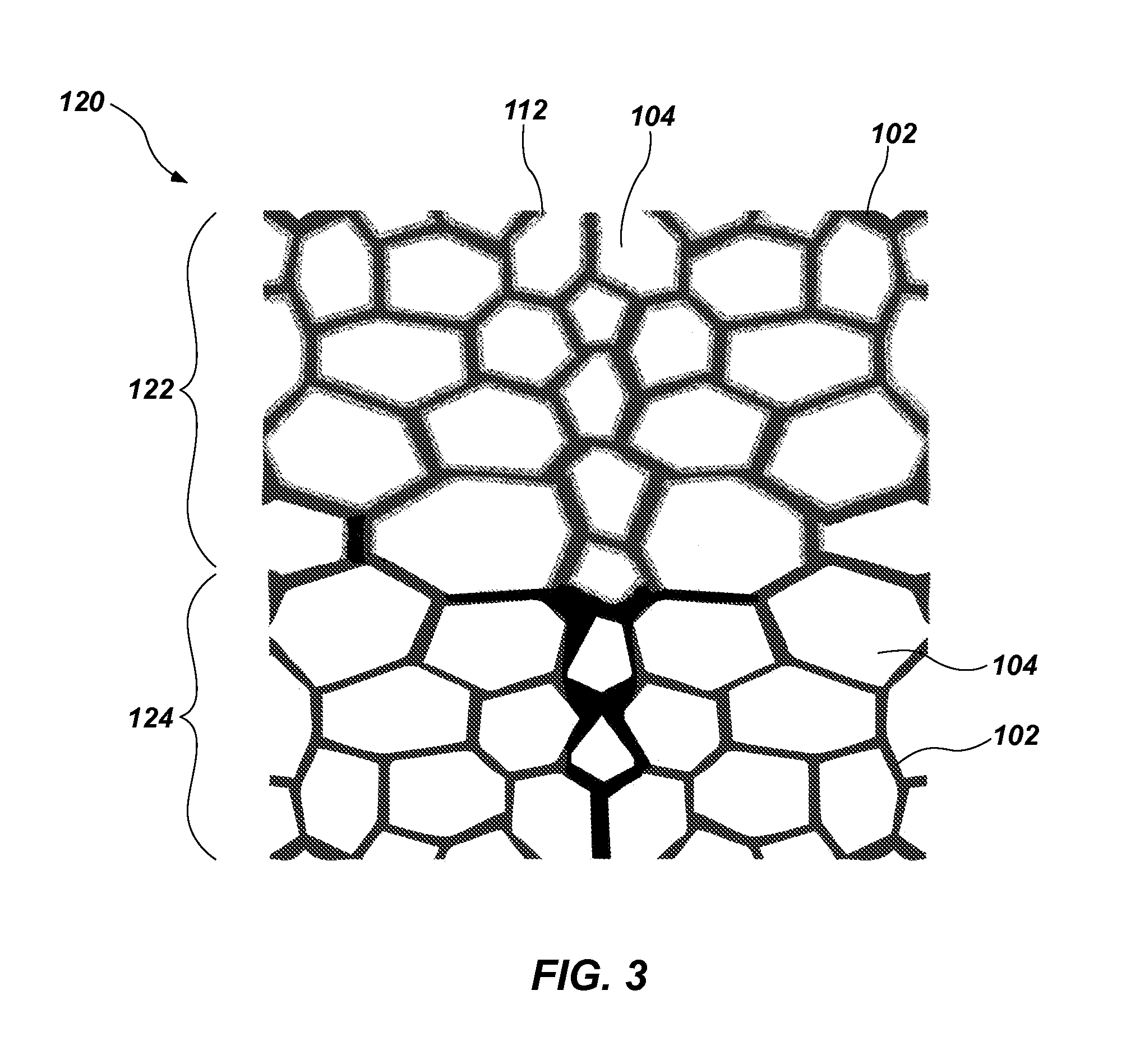Cushioning elements comprising elastomeric material and methods of forming same
- Summary
- Abstract
- Description
- Claims
- Application Information
AI Technical Summary
Benefits of technology
Problems solved by technology
Method used
Image
Examples
example 1
[0075]A polyurethane foam having a density of about 1.8 lb / ft3 and an Indentation Force Deflection (IFD) of about 32 lbs / 50 in2 is soaked with an elastomeric material, and the foam is compressed to remove a portion of the elastomeric material. As used herein, the term “Indentation Force Deflection (IFD)” means a force required to compress 50 in2 of a 20 in by 20 in by 4 in sample by 25%, as measured in accordance with ASTM Standard D3574 (Standard Test Methods for Flexible Cellular Materials—Slab, Bonded, and Molded Urethane Foams, ASTM Int'l, West Conshohocken, Pa., 2011). The compressing force is released to allow the foam to return to its original shape. The mass of the elastomeric material removed may be greater or less than the mass of the elastomeric material not removed (i.e., retained within the foam). A coating of the elastomeric material may remain on the cell walls of the polyurethane foam, but does not completely clog all breathability of the foam (i.e., one or more gas ...
example 2
[0076]A polyurethane foam having a density of about 1.8 lb / ft3 and an IFD of about 27 lbs / 50 in2 is soaked with one or more precursors which may form an elastomeric material. The foam is compressed to remove a portion of the precursors, and the compressing force is released. A coating of liquid may remain on the open cell walls of the polyurethane foam. The precursors may react to form a thermoset elastomeric material. The precursors may include one or more liquid or solid components. In some embodiments, a catalyst or cross-linker may be applied to the foam after the compressing force is released. In some embodiments, heat may be temporarily applied to assist in the reaction before or after the compressing force is applied and / or released. A liquid component may include a polyurethane gelatinous elastomer, a silicone gelatinous elastomer, or a PVC gelatinous elastomer (such as plastisol), all of which are known in the cushioning art and not described in detail herein. The coated fo...
example 3
[0077]A viscoelastic polyurethane foam (e.g., memory foam) having a density of about 7 lb / ft3 is soaked with a molten thermoplastic elastomeric material, and the foam is compressed between opposing rollers to remove a portion of the elastomeric material. A coating of the elastomeric material may remain on the open cell walls of the memory foam after the foam passes between the rollers. The foam and elastomeric material are cooled to solidify the elastomeric material and a fabric cover is applied to the exterior, such that the assembly may be used as a cushion (e.g., a shoe insole or midsole, etc.). The cushion may have any or all of the benefits identified in Example 1, above.
[0078]The elastomeric material may include phase-change microspheres (PCMs) (i.e., microspheres encapsulating a phase-change material). The elastomeric material may be as described in U.S. Pat. No. 5,994,450, U.S. Pat. No. 7,964,664, and U.S. Pat. No. 4,369,284, each of which has been previously incorporated by...
PUM
 Login to View More
Login to View More Abstract
Description
Claims
Application Information
 Login to View More
Login to View More - R&D
- Intellectual Property
- Life Sciences
- Materials
- Tech Scout
- Unparalleled Data Quality
- Higher Quality Content
- 60% Fewer Hallucinations
Browse by: Latest US Patents, China's latest patents, Technical Efficacy Thesaurus, Application Domain, Technology Topic, Popular Technical Reports.
© 2025 PatSnap. All rights reserved.Legal|Privacy policy|Modern Slavery Act Transparency Statement|Sitemap|About US| Contact US: help@patsnap.com



